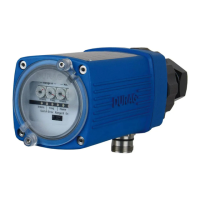14 Appendix: Glossary
130 D−LX 200, D−LX 720
14 Appendix: Glossary
Background radiation influence
Radiation from static emitters, like
incandescent boiler components, can be
modulated by combustion air currents or
flue gas plumes. If the measured
radiation is in the range of the flame
spectrum and in the normal flicker
frequency range (approx. 10 to 200 Hz)
of a flame, monitoring systems can
mistakenly detect a flame signal. Modern
flame monitor systems must be able to
filter out this "background radiation
influence".
Claus plant (SRU, sulphur recovery unit)
All H
2
S-containing exhaust gases that
develop are processed in the Claus plant.
The toxic H
2
S is converted into elemen-
tary sulphur and water during this process.
CPU
The main processor (Central
Processing Unit; abbreviated to CPU]),
often also simply referred to as the
processor in general usage, is the central
processor of a computer, which controls
all other components.
Cyclical communication
Interface communication in which data
are bundled into data packets and
transferred in a defined order, separated
by defined characters (e.g. semicolon).
Data bus
The bus is a frequently used term in data
processing for a wiring system for data
exchange between potentially more than
two nodes.
A bus is a wiring system with associated
control components, which serves for the
exchange of data and/or energy between
hardware components. Bus systems are
particularly used inside computers and to
connect computers to peripheral devices,
but also in the control of machines.
A field bus is an industrial communication
system, which connects a multitude of
field devices such as probes (sensors),
actuating elements and drives (actuators)
to a control device. Field bus technology
was developed in the 80s, in order to
replace the previously standard parallel
wiring of binary signals and analogue
signal transmission with digital trans-
mission technology.
DIP switches
are small switches which are used (e.g.
on the motherboard or other printed
circuit boards) to perform defined basic
settings. The abbreviation stands for dual
in-line package, i.e. a configuration with
two parallel series of connections.
FFRT
Flame Failure Response Time
Flame intensity
The flame intensity results from the
(→) flame signal and offset against the
gain settings. It is digitally calculated as a
numerical value (from 0 to 2²³) and output
as 0…100%.
Flame signal
An (analogue) current is generated by the
flame in the photodiode and subsequently
further processed in the analogue
amplifier and analogue filters. This flame
signal (AC/DC) is sent to the microcon-
troller inputs for further digital processing.
Flame radiation
is the visible and non-visible (IR/UV) light
emitted by the flame.
Harmonic detection
The flicker frequency of a true com-
bustion process fluctuates.
A flicker frequency that remains constant
over several seconds can therefore not
originate from a flame. This situation is
identified and results in an error message
after 10 seconds. Also see chapter 9.5.3
on page 110.
Low-NOx
In this incineration technique, the flame
temperature is reduced by recirculating
exhaust gases from the combustion
chamber, so that the flame is cooled.
This results in a considerable reduction in
pollutants, particularly nitrogen oxides.
Modbus (interface communication)
The Modbus protocol is a communication
protocol based on a master/slave or
client/server architecture. Modbus has

